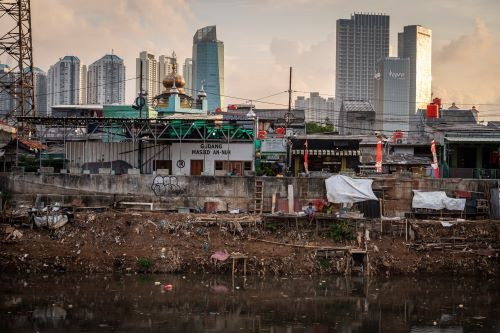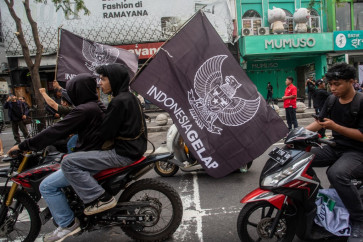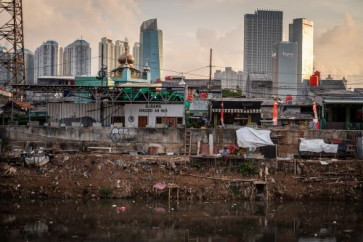Popular Reads
Top Results
Can't find what you're looking for?
View all search resultsPopular Reads
Top Results
Can't find what you're looking for?
View all search resultsAnalysis: Poverty, unemployment fall at the cost of rising informality
Change text size
Gift Premium Articles
to Anyone
I
ndonesia’s poverty and unemployment rates continued to decline, according to data released by Statistics Indonesia (BPS) earlier this year. This progress is accompanied by a modest reduction in income inequality. However, these gains mask deeper structural issues as urban poverty rises and labor informality becomes more widespread, exposing more Indonesian workers to precarity.
BPS reported in July that the national poverty rate fell to 8.47 percent in March 2025 from 9.03 percent in March 2024, according to the National Socioeconomic Survey (Susenas). The poverty rate, reaching its lowest point since the 1970s, falls despite an increase in the per capita poverty line by Rp 26,000 (US$1.58) to Rp 609,160 per month. Furthermore, BPS also recorded a decline in the extreme poverty to 0.85 percent from 1.26 percent in the previous period. The Gini coefficient, a measure of income inequality, also improved slightly, from 0.379 to 0.375 year-on-year.
However, BPS continues to use the World Bank’s older poverty threshold of US$2.15 per day, which is based on 2017 purchasing power parity, even though the Bank updated its extreme poverty line to $3 per day under 2021 PPP. Given that Indonesia’s gross national income (GNI) per capita reached $4,580 in 2023, qualifying it as an upper-middle income country, the relevant World Bank poverty line should be as high as $8.30 per day. The National Economic Council (DEN) has suggested a more realistic benchmark of US$4.20 per day, equivalent to the World Bank’s poverty line for lower-middle income countries.
While rural poverty remains relatively high at 11.03 percent, it declined by 0.31 percentage points compared to September 2024. In contrast, urban poverty increased slightly by 0.07 percentage points to 6.73 percent. BPS attributed the rise to a 640,000 increase in underemployed persons, defined as those working fewer than 35 hours per week, between August 2024 and February 2025. Rising food prices also contributed, particularly affecting urban populations who are less able to grow their own food.
According to BPS’s National Labor Force Survey (Sakernas), open unemployment fell slightly to 4.76 percent as of February 2025, down 0.06 percentage points year-on-year, representing 7.28 million people. However, underemployment, those working for less than 35 hours a week, remains a concern. Underemployment affects 7.62 percent or 11.67 million people. In addition, youth aged 15–24 accounted for the largest share of open unemployment at 16.16 percent. Meanwhile, job layoffs continue, reaching 24,036 between January and April 2025, despite being a notable drop from 77,965 in the same period in 2024. Looking at the persistent layoff trends, International Monetary Fund (IMF) projects Indonesia’s unemployment rate to increase to 5 percent in 2025 and 5.1 percent in 2026.
These headline figures have yet to capture the precarious conditions faced by a large segment of the workforce, now coined as the precariat (from “precarious” and “proletariat”). Informal employment rose slightly to 59.4 percent of the labor force in February 2025, or 86.58 million out of 145.77 million workers. The number of part-time workers earning above the minimum wage dropped sharply from 37.19 million in 2021 to just 8.35 million in 2024. The workers’ concerns are captured by Bank Indonesia’s consumer confidence survey, where its Job Availability Index plunged from 101.6 in April 2025 to 94.1 by June, falling below the optimistic threshold of 100 points.
To address these structural challenges, Indonesia must consider aligning its poverty benchmarks with updated global standards, so economic policies are based on more accurate estimation of the country’s shortcomings, despite the issue’s significant political sensitivity. Business regulations should also focus on formalizing the economy instead of incentivizing unclear labor relations that underlies “precarity.” Increased vocational training and apprenticeship linkages between higher education and industry is needed to resolve job market mismatches.



















